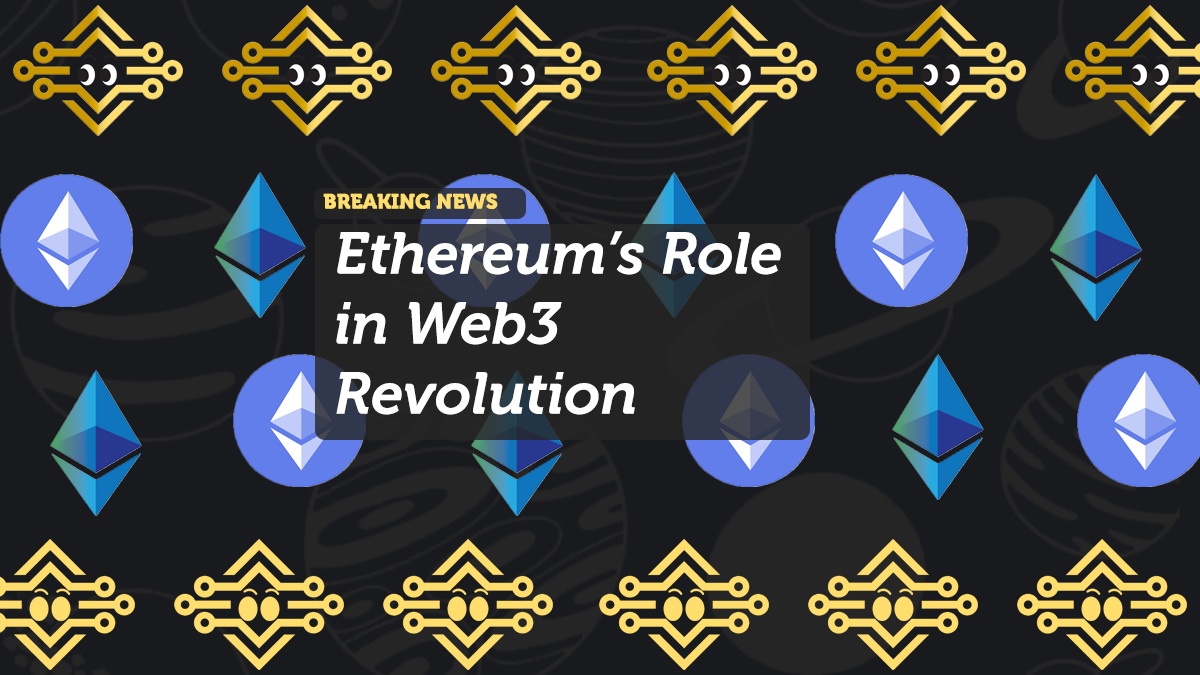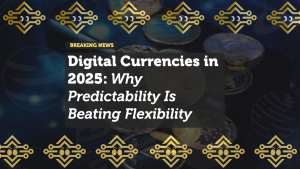
Ethereum’s Role in the Web3 Revolution
The internet is evolving rapidly. What started as Web1—a collection of static websites—transitioned into Web2, dominated by centralized platforms like Google, Facebook, and Amazon. Now, we are on the brink of Web3, the decentralized internet where users have control over their data and online experiences. At the center of this revolution stands Ethereum, a blockchain empowering developers to build dApps and smart contracts that fuel Web3’s growth. In this blog, we’ll explore Ethereum’s pivotal role in the Web3 revolution and how it is reshaping the internet as we know it.
What is Web3?
Web3 Defined
Web3 represents the next generation of the internet. It’s a decentralized web built on blockchain technology, where users have ownership and control over their data, identities, and digital assets. Web3 seeks to eliminate middlemen and provide more freedom and autonomy to individuals. Core components of Web3 include decentralized applications (dApps), smart contracts, decentralized finance (DeFi), non-fungible tokens (NFTs), and decentralized storage.
Ethereum: The Foundation of Web3
Ethereum plays a foundational role in enabling Web3 because of its smart contract capabilities. These self-executing contracts run on the Ethereum blockchain and allow developers to build decentralized apps that power everything from finance to gaming, social media, and beyond. Ethereum’s programmable blockchain makes it the most popular platform for Web3 innovation, as developers can create anything from NFT marketplaces to decentralized social networks.
Ethereum’s Smart Contracts: The Core of Web3
What are Smart Contracts?
Smart contracts are at the heart of Ethereum’s role in Web3. These contracts automatically execute when predefined conditions are met.
The Impact of Smart Contracts in Web3
Ethereum’s smart contracts have unlocked new possibilities for decentralized applications. For example, they enable decentralized finance (DeFi) platforms like Aave and Compound. Moreover, they facilitate NFT marketplaces like OpenSea and Rarible, transforming various industries. Users can lend, borrow, trade, and own digital assets without relying on centralized authorities.
Ethereum’s Decentralized Applications (dApps): Powering the Future
What are dApps?
dApps are decentralized applications that run on Ethereum’s blockchain. Unlike traditional applications controlled by a single entity, dApps operate autonomously once deployed. They have no single point of control or failure. Therefore, they offer increased transparency and security, making them ideal for a decentralized web.
Ethereum’s Role in Building dApps
Ethereum is the leading platform for dApp development, with thousands of decentralized applications built on its blockchain. These dApps span multiple sectors, including finance, gaming, social media, and supply chain management. Projects like Uniswap (a decentralized exchange), Axie Infinity (a play-to-earn gaming platform), and Brave Browser (a privacy-focused web browser) are shaping Web3 significantly.
Decentralized Finance (DeFi): Redefining the Financial System
Ethereum’s Role in DeFi
Ethereum has pioneered the decentralized finance (DeFi) movement, one of the most significant use cases for Web3. DeFi platforms allow users to access financial services like lending, borrowing, and trading without relying on traditional banks. Instead, these services run on decentralized protocols powered by smart contracts.
Platforms like Uniswap, SushiSwap, and MakerDAO offer alternatives to centralized exchanges and banks. By providing access to financial tools without intermediaries, Ethereum is democratizing finance. Consequently, it is making financial services accessible to a global audience.
DeFi’s Impact on Web3
DeFi is a critical piece of the Web3 puzzle because it represents a fundamental shift in how people manage their finances. By leveraging Ethereum’s decentralized infrastructure, DeFi platforms eliminate the need for trusted third parties. They reduce transaction costs and provide access to a borderless financial system. In this way, Ethereum is shaping a future where financial services are open, accessible, and transparent.
NFTs: Redefining Ownership in Web3
Ethereum and NFTs
Ethereum is the home of NFTs, unique digital assets that are revolutionizing how we think about ownership in the digital world. NFTs can represent anything from digital art to music, virtual real estate, and collectibles. Ethereum’s ERC-721 and ERC-1155 token standards enable NFTs to be created and traded securely. Therefore, users can truly own their digital assets.
NFTs and the Web3 Movement
NFTs are more than just digital art; they represent a new way to own, trade, and verify digital assets. Platforms like OpenSea and SuperRare rely on Ethereum to power their NFT marketplaces. These platforms have brought a new layer of user-driven ownership to Web3. With Ethereum’s decentralized infrastructure, NFTs are not controlled by any single entity, giving users full ownership and control over their digital assets.
Challenges and Ethereum 2.0: Scaling for the Web3 Future
Scalability and Network Congestion
While Ethereum is leading the Web3 charge, it faces challenges, especially in terms of scalability. As more users flock to Ethereum, network congestion and high transaction fees (gas fees) have become significant issues. Consequently, developers are looking for solutions that can scale Ethereum without compromising its decentralization.
Ethereum 2.0: The Path to Scalability
Ethereum 2.0 (ETH2) is the long-awaited upgrade aimed at solving Ethereum’s scalability issues. By transitioning from Proof-of-Work (PoW) to Proof-of-Stake (PoS) and implementing sharding, Ethereum 2.0 will process thousands of transactions per second. This upgrade is crucial for ensuring Ethereum’s long-term dominance in Web3 and enabling mass adoption of decentralized applications.
The Future of Ethereum in Web3
Ethereum’s Continued Innovation
Ethereum’s role in the Web3 revolution is undeniable. With smart contracts, dApps, DeFi, and NFTs, Ethereum has already transformed industries and given birth to new ones. As Ethereum continues to scale and innovate, it will remain at the core of the decentralized web.
The Role of Ethereum in a Decentralized Future
Ethereum’s open, permissionless infrastructure is the foundation upon which Web3 is being built. As the demand for decentralized applications grows, Ethereum will continue to lead. It empowers developers, users, and innovators to shape the future of the internet.
Conclusion
Ethereum is driving the Web3 revolution, reshaping the internet from centralized control to user-driven experiences. With its smart contracts, dApps, DeFi platforms, and NFTs, Ethereum is creating an open, transparent, and decentralized internet. As Ethereum 2.0 rolls out, we can expect Ethereum to further cement its place as the backbone of the decentralized web. Web3 promises to give users more control over their data, assets, and interactions—and Ethereum is leading the way.
















